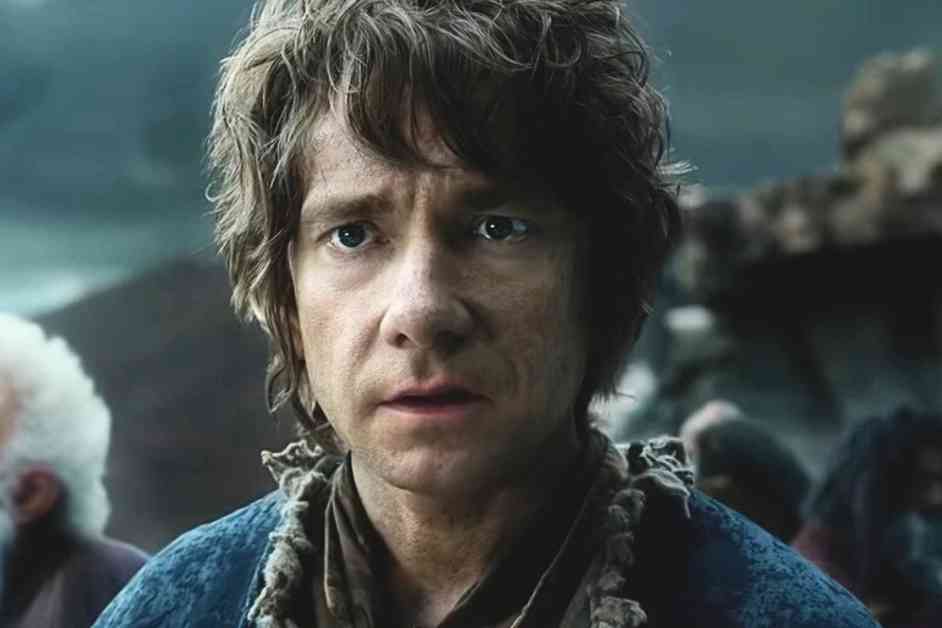Peter Jackson’s Unplanned Journey: Why He Wasn’t Supposed to Direct The Hobbit Trilogy
The world of Middle-earth has become synonymous with the directorial genius of Peter Jackson. However, he was not the initial choice to helm The Lord of the Rings and its appendices. As the early 2000s rolled around, The Return of the King had just conquered cinemas worldwide, ascending to the pinnacle of the global box office. After numerous failed attempts, Hollywood seemed to have cracked the code on how to successfully bring fantasy worlds to life on the big screen. Jackson’s trilogy marked a turning point for the industry, opening the floodgates for the exploration of rich and immersive imaginary realms.
MGM, eager to replicate the success of The Lord of the Rings adaptation in three parts, entrusted Peter Jackson with delving deeper into the exploration of Middle-earth. However, the New Zealander was adamant about passing the torch to another director. Who better than a devoted admirer of his work and a master of the fantastical to take on this monumental task? In 2008, Guillermo del Toro’s name surfaced, with the visionary behind Hellboy set to tackle The Hobbit. Collaborating with Jackson and Fran Walsh, who were deeply ingrained in all things Tolkien, del Toro began working on concept art, scripts, and set designs. Known for his whimsical and darkly imaginative style, del Toro, while not a die-hard Tolkien fan, aimed to pay homage to Peter Jackson through his unique vision.
Del Toro envisioned a more dreamlike and whimsical approach to The Hobbit, with gothic and somber undertones woven throughout. His Middle-earth was to be depicted as luminous and golden, with a narrative shift in ambiance as the story unfolded. Drawing a clear distinction between Bilbo’s adventures and Frodo’s quest was paramount for del Toro. He aimed to portray the Ring as a mere artifact capable of rendering its bearer invisible, aligning more closely with J.R.R. Tolkien’s original vision of The Hobbit as a tale for youthful readers, brimming with colorful characters.
A connoisseur of peculiar creatures, del Toro had a wealth of material to work with. At the time, he shared his approach to the character of Smaug, the dragon. « I am certain that the final design will be a revelation. He embodies so much, greed, vanity… We will need to explore every facet before unveiling his true appearance. His look must encapsulate his essence. » Initially planned as a two-film endeavor, the first installment was to encompass the events of the book, while the second would serve as a bridge to The Lord of the Rings. Surprisingly, the pivotal Battle of the Five Armies was not slated to occur on screen, as the character would be unconscious during the conflict. Del Toro spared no effort in securing the green light for his vision, only to face the harsh reality of an increasingly risk-averse industry.
By 2009, as development progressed, del Toro and Jackson found themselves grappling with a formidable challenge. Metro Goldwyn Mayer was facing financial turmoil, leading to the abandonment of numerous projects, including James Bond, RoboCop by Darren Aronofsky, and a new Terminator installment. The Hobbit project fell behind schedule, prompting a dejected del Toro to relinquish his grip on Middle-earth and explore other creative avenues. Shortly thereafter, Peter Jackson took the reins and hastened to bring the project to fruition. Ultimately, three films would emerge from the ashes, met with mixed reactions from audiences and even leaving Jackson somewhat dissatisfied with the final outcome.
The Hobbit: The Battle of the Five Armies is set to air on TMC this Thursday, September 12, offering viewers a chance to revisit (or reassess) the saga led by Martin Freeman. Stay updated on all things geeky by subscribing to Google News for the latest updates from The Geek Journal. And if you’re a fan of ours, don’t miss out on our daily newsletter for your morning dose of geeky goodness.
The Unlikely Journey of The Hobbit Trilogy
Peter Jackson’s initial reluctance to direct The Hobbit trilogy paved the way for Guillermo del Toro’s ambitious vision to take center stage. As the torchbearer for Middle-earth, Jackson’s legacy loomed large, with del Toro stepping up to the challenge of expanding the fantastical realms crafted by J.R.R. Tolkien. The collaboration between these two visionary directors promised a fresh perspective on the beloved tale of Bilbo Baggins and his epic journey.
A Tale of Creativity and Compromise
Del Toro’s distinctive style, characterized by a blend of whimsy and darkness, set the stage for a reimagining of The Hobbit that would pay homage to both Tolkien’s original work and Jackson’s groundbreaking adaptation of The Lord of the Rings. His approach to character design, particularly the enigmatic dragon Smaug, hinted at a deep understanding of the thematic undercurrents that ran through Tolkien’s narrative. Despite facing setbacks and financial hurdles, del Toro remained steadfast in his commitment to bringing Middle-earth to life in a way that would captivate audiences old and new.
The Legacy of Middle-earth
While Guillermo del Toro’s tenure as director of The Hobbit may have been short-lived, his creative imprint on the project left a lasting impact. As Peter Jackson ultimately took the helm and steered the trilogy to completion, the spirit of del Toro’s vision lingered, infusing the films with a sense of whimsy and wonder that set them apart from their predecessors. The journey from conception to realization was fraught with challenges, but it was this very adversity that shaped the final product into a testament to the enduring power of storytelling and imagination.

